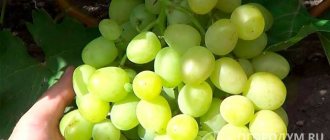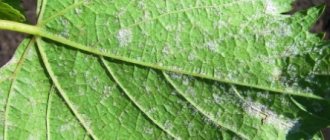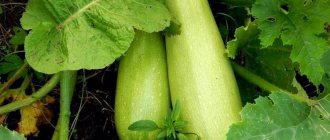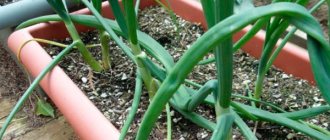Protection of southern vines grown in closed and open ground conditions from severe frosts is practically the same in all areas of the Central European Plain.
Therefore, novice gardeners can successfully use all methods of covering grapes for the winter in the Urals:
- using nonwoven materials;
- with improvised means;
- in a polycarbonate greenhouse;
- covered with earth in the trench.
As soon as the wine berry harvest is harvested, it is necessary to carry out preparatory measures aimed at preserving the vine during the harsh winter months:
- Water the bushes thoroughly with water.
- Spray with a weak solution of copper sulfate.
- Cut the stepsons to trunks with dense bark.
- Use garden pruning shears to remove excess length of fruit-bearing branches.
Other types will only need to be shortened slightly and tied into bunches in several places with a wide strip of non-woven material before covering the grapes for the winter in the Urals. Step-by-step photos will tell novice gardeners the right ways to prepare bushes for cold weather.
When to cover grapes for the winter in the regions, timing
Work on insulating grapevines before winter includes several stages:
- pruning after fruiting;
- removing vines from supports;
- shelter directly.
All of them are held at different times, depending on the climate of the region and the characteristics of the autumn weather. Affects the time of shelter and the age of the grape bush. First-year plants must be insulated without waiting for the temperature to drop to -5 degrees. Mature and strong bushes can easily survive short-term frosts without shelter.
It is necessary to finally cover the grapes when the average daily temperature reaches +2 +4 degrees.
Important! If, after a cold snap, a long period of warm weather occurs again, the grapes must be opened slightly. Otherwise, the vines may be banned.
In outskirts of Moscow
The harvest from late grape varieties is harvested in September, and then preparations are made for winterization: the vines are pruned, treated with anti-disease medications, and the shoots are lowered from the trellis to the ground.
The grapes are covered at the end of October, in warm autumn - in the first ten days of November.
In the middle zone
The timing of covering grapes is similar to that in the Moscow region. Young grape seedlings, sensitive to low temperatures, are insulated already in early October.
In the Urals
The climate of the Urals varies significantly from south to north. Viticulture is more developed in the Southern Urals, where the climate is milder and winters are rich in snow.
Sheltering of grape plants begins after the first frost, when the temperature during the day does not rise above +5 degrees. It's October.
In Siberia
In the coldest region of Russia, only winter-hardy grape varieties or wild varieties (Amur) are grown. They should be covered after leaf fall, in late September - early October.
First, the vines are only placed under cover, without covering them tightly on all sides. This is necessary to evaporate condensate, which is formed from fluctuations in positive and negative temperatures. The plants are finally closed when the thermometer stops at -10 degrees.
How to cover in a greenhouse?
Gardeners who do not want to depend on the surprises of the Ural summer try to grow early varieties of vines indoors. Preparation for cold weather in this case is somewhat easier, as it allows you to control the situation with a greater likelihood of success.
Before insulating the bushes in the greenhouse, standard preparation should be carried out:
- trim the stepsons;
- shorten fruiting shoots;
- feed the root system;
- spray the branches with a weak solution of copper sulfate.
You can also insulate bushes in wet weather - greenhouse conditions protect the plant from excess moisture, which can cause fungus or mold on the shoots:
- Tie all the bushes into one bundle. If the grapes have dense woody bark, it will be difficult to tilt them towards the ground, so vertical insulation will have to be carried out. To do this, it is better to use agrofibre or spunbond - they cover the bundles in 2-3 layers.
- Polyethylene film for vertical shelters is not suitable for the winter - it does not allow air to pass through and collects condensation, which is harmful to the kidneys in cold conditions.
- If the plant's lashes lie easily and do not crack at the bends, they can be tied along the lower trellis, having previously trimmed the side shoots.
Build a frame from scrap materials and stretch plastic film over it. The ends of the shelter for grapes remain open for ventilation until the onset of constant cold weather not exceeding -5 degrees. Instead of film, non-woven materials are increasingly being used, which do not require an additional, rigid base.
How to prepare grapes for shelter
Before insulating plants, a number of preparatory measures should be carried out: fertilizing, treatment against diseases, pruning and removing shoots from the trellis.
Top dressing
No later than 3 weeks before the onset of cold weather, the grapes must be fed. Feeding containing potassium and phosphorus promotes the ripening of young plant branches and prepares the roots for wintering.
The following composition is used: 30 g of superphosphate and 15 g of potassium salt per 10 liters of water. A bucket of nutrient solution is enough for 1 square. m beds.
You can feed the vineyard with ash and humus. Ashes from burning wood (you cannot use ash from burning painted boards or plastic) and rotted manure or compost are scattered over the surface of the earth. For 1 sq. m consume 2 cups of ash and up to 5 kg of humus.
Trimming
Autumn pruning is carried out after leaf fall, when the structure of the bush and the presence of young growth are clearly visible. All immature and weak shoots of grapes are cut off; they still run the risk of not surviving the winter and will only become breeding grounds for infection. Of the current year's growth, 6-7 healthy branches are left. Last year's vines are shortened, leaving up to 15 buds.
Pruning is carried out in dry and sunny weather. Use sharp pruning shears. Wounds on the shoots are covered with garden varnish. Shoot prunings and fallen leaves are removed from the vineyard and burned.
Treatment for diseases
After pruning, the grapes are sprayed with antifungal and pest control agents. Use iron sulfate 3% solution (300 g of powder dissolved in 10 liters of hot water). The cooled solution is generously sprayed onto the grape bush and the soil around the trunk. To destroy pest larvae overwintering on grapes, urea (100 g per 10 liters of water) can be added to iron sulfate.
Instead of iron sulfate, you can use Bordeaux mixture at 1% concentration.
For autumn treatment of plants, winegrowers often use: a solution of baking soda (100 g per bucket of water), lime (500 g per bucket). You can use ready-made drugs: Fundazol, Topaz, Ridomil.
Watering
If autumn is dry, the plants need to be watered before covering the grapes. Roots saturated with moisture are more elastic and resistant to frost. The required moisture rate depends on the age of the plant, and is 15-20 liters for each year of the grape bush’s life.
Removing the vine from the trellis
The final stage of preparing grapes for shelter for the winter. But. Before removing the shoots from the supports, they need to prepare a “bed”; grapes should not be placed on bare ground (the plant may become moldy from contact with damp soil). Dry, clean straw, boards or bars, and large shavings are used as “bedding.”
The vines are removed from the supports and, tied into bunches, laid on the prepared bedding. To tie the shoots together, twine is used; the bundles are not tied tightly.
The vines laid on the ground are secured in the desired position using wire staples.
The processed, tied and laid grapes are ready for covering.
Preparatory work in the vineyard
Incorrectly covered grapevines face many dangers:
- young branches and roots can become food for mice;
- mold fungi may form on the branches;
- Kidneys may freeze.
Preparatory activities:
- if the weather is dry in the fall, you need to water the vineyard well and fertilize it with minerals;
- carry out preventive treatment of bushes;
- remove the vine from the trellis and tie it into bunches;
- prepare covering material and trenches for shelter.
Ways to cover grapes for the winter
Depending on the climate and the presence of snow cover in winter, different methods of insulating grapes are used.
Air-dry shelter
The most reliable way to insulate grapes. It consists of covering the vines with loose and dry material and protecting them from moisture. As a rule, grapevines laid on bars or straw are generously covered with dry sawdust and foam chips (you can even use small expanded clay). The insulation layer above the vine should be 10-12 cm. The resulting mounds are covered with thick plastic film on top. The edges of the film are pressed to the ground with staples, pieces of boards, and sprinkled with earth. In such shelter, grapes tolerate frost well, even with a lack of snow.
Important! To prevent mice from damaging the grapes, poison or pieces of sponge soaked in tar and Vishnevsky’s ointment are scattered inside the shelter. Dry grass of wormwood, wild rosemary, elderberry, and tansy will help repel rodents.
Another dry shelter option is suitable for areas with mild or snowy winters. Arcs made of strong wire are installed over the vines lying on the ground, on which a thick film or agrofibre is thrown. The air inside the shelter is a natural insulator for the grapes.
On a note. A winegrower from the Samara region, V. B. Klimanov grows grapes in beds fenced with boards, planting plants deeper than the level of the paths. With the arrival of cold weather, he lowers the vines to the bottom of the boxes and covers them with boards on top. The resulting boxes are covered with additional film. The grapes winter successfully even in winters with little snow.
The ends of the shelter are sealed last to prevent the grapes from overheating.
Hilling
This is a rather labor-intensive method, but inexpensive (does not require the purchase of covering material) and effective in areas with little snow.
Using this method of shelter, grapes are initially grown in depressions - trenches. Their depth is 20-30 cm. After removing the shoots from the supports, the vines are covered with a mixture of sandy soil and sawdust (cut straw). Spud the base of the bush and the base of the branches within a meter radius from the trunk. The height of the earthen mound should be at least 30 cm.
Important! To prevent the base of the bush from rotting in the spring, when falling asleep, “breaths” are left - pieces of hose extending beyond the earthen embankment. Warm and humid air will come out and the grapes will not rot.
In the spring, you need to unplant the grapes very carefully so as not to damage the shoots. You can make the work easier by covering the vine with lutrasil, and only then covering it with earth.
Double layer tent
A simple and easy-to-install shelter option that is suitable for large grape plantations.
Along the grape rows, at a height of 30-40 cm above the vine laid on the ground, a strong wire is pulled. Thick lutrasil or agrofibre, darnit is thrown onto the wire to form a hut or tent. A thick film or foiled polyethylene is placed on top of the non-woven material with the reflective part facing out. The edges are sprinkled with soil or pressed down with stones. The ends are closed by fastening the material with brackets.
Agrofibre absorbs moisture coming from the ground and does not allow the grapes to get wet. Foil polyethylene not only protects from frost and moisture from the outside, but also reflects the sun's rays, preventing the air inside the shelter from overheating on a sunny day.
Spruce spruce branches
In areas where it is possible to collect enough spruce branches, grapes are insulated with them. The vine is laid on a bed of spruce paws, and the grapes are covered with them. The thickness of the layer of spruce branches depends on the severity of the frost, and ranges from 15 to 30 cm. To prevent the branches from being blown away by the wind, they are pressed down with wooden blocks or boards.
Tires
Separately standing grape bushes can be insulated using tires. The vine is twisted into a ring so that a car tire is placed on the plant (the larger the grape bush, the larger the diameter of the tire). A film or agrofibre is placed on top of the tire, secured with stones or sprinkled with soil.
How to cover grapes for the winter, a very good way - video
Features of wintering grapes in other regions
Even resistant varieties require protection from frost. In the southern regions, the roots are reliably protected from the cold by a layer of soil. Methods of covering grapes for the winter largely depend on the characteristics of the region. In Central Russia and the Volga region, even frost-resistant grape varieties are recommended to be covered. These plants tolerate short-term temperature drops down to -30°C...-40°C. Moreover, if frosts persist for more than 2 weeks and too little snow falls, there is a high probability of death of the vineyard.
In these regions, the climate is relatively mild, so to protect the vine, you can wrap it with insulation. You can throw a large layer of fallen leaves on the soil. This is often enough for frost-resistant varieties to withstand short periods of severe cold in winter. At the same time, less resistant plants require comprehensive insulation.
In Siberia, the Urals, Transbaikalia and the Far East, grape processing in the fall should be carried out long before the first frost. Winter comes abruptly to these regions, and a sudden cold snap can destroy the entire vine. Material for covering grapes for the winter is selected taking into account the variety and climatic characteristics of the region.
When considering whether grapes need to be covered, it is necessary to take into account not only the climate of a particular region, but also the characteristics of the plant. If the seedlings have been placed on the site for only the first year, they must be protected from frost. The vine and roots of young grapes, even resistant varieties, can quickly freeze. It is better to insulate annual plants long before the first frost, regardless of the region.
Features of sheltering young grapes
A young, not yet mature plant is insulated until the temperature drops below zero. Young grapes are not fed in the fall and are not pruned.
They practice high hilling (to a height of 30-40 cm) of the seedling with dry soil or mulching with sawdust and fallen leaves. The uncovered vine is rolled into a ring and covered with a piece of agrofibre. The structure is covered with soil on top or covered with spruce branches.
Preparing shrubs for winter
Preparing a vineyard for winter includes several stages:
- Feeding;
- Removing bushes from trellises, ripening;
- Vine pruning;
- Katarovka;
- Treating the bush with special means to protect against diseases (vitriol, nitrafen);
- Abundant watering;
- Laying bait for rodents (if necessary);
- Hardening;
- Bending and laying the vine.
After harvesting, fertilizing should be carried out under the vine and within a radius of 1 m from it using phosphate-potassium mineral fertilizers, ash solution or nitroammophosphate (Figure 4).
Note: Since only mature wood can successfully overwinter, young shoots are removed from the trellises and laid out on the ground so that they receive a large amount of sunlight.
If the ripening process has not yet ended, and early night frosts have already appeared, the vine should be protected at night with film or other covering material. When the daytime temperature drops to -5 and there is no sunlight, ripening stops.
After the onset of the first cold weather in late September - early October, the autumn pruning procedure begins, which is carried out in accordance with a number of rules:
- All fruit-bearing shoots with fallen leaves, as well as diseased, thin, immature shoots and tops must be pruned.
- Do not prune young bushes of the current year.
- Two-year-old branches are pruned, leaving 10 to 15 eyes in reserve until spring pruning. Moreover, the thicker the shoot, the longer the length should be left.
- When cutting off young branches, 6 to 8 lignified replacement shoots are left, each of which bears up to 4 buds.
- The procedure is carried out with a clean, disinfected and sharp instrument.
- The cut areas are lubricated with garden varnish.
Figure 4. Preparatory measures include pruning, watering and fertilizing
For grapevines under 4 years old, catarrhization is also carried out, that is, the removal of dew roots located at a depth of 20-25 cm, and therefore susceptible to freezing. The catarrhization procedure increases the frost resistance of the plant and also promotes the growth of the root system deep into the soil. To carry out the procedure, it is necessary to dig a hole 20 cm deep around the trunk, cutting off the roots at the base that grow horizontally to the soil surface, and disinfecting the cut areas with copper sulfate or boric acid. After the antiseptic has dried, the hole is buried, completing the catarrhization.
The next step after pruning shoots and dew roots is to treat the bush from pests and diseases using fungicides and special preparations (Ridomil, Nitrofen). In addition, at this stage, all grass and fallen leaves should be removed from under the vine, and the cut shoots should be burned.
Note: If the autumn is dry, moisture should be charged 2-3 days before sheltering to increase the heat capacity of the soil. The volume of moisture is calculated depending on the age of the vine.
So, for each year of the plant’s life, 2 buckets of water will be needed for watering, which is poured either into drainage holes or into shallow holes dug around the perimeter of the bush at a distance of 50 cm from its center. To prevent diseases of the root system, watering can be done with a pale pink solution of potassium permanganate.
Healthy mature bushes, as well as varieties with high frost resistance, are in no hurry to wrap up at the first light frost. They are kept for several days at low temperatures (down to -5) for hardening, carefully monitoring the temperature indicators in order to quickly cover them when they drop sharply (down to -10-12 degrees).
When insulating grapes for the winter, it is recommended to place planks or spruce branches under the bush to protect the branches from mold and rot as a result of their contact with wet soil. The shoots are tied into bundles using synthetic rope or soft wire and laid horizontally in specially dug trenches. An adult vine is rolled into a ring. The grapes laid in this way are fixed with metal brackets at a distance of 10 cm from the soil surface.
Which grapes are not covered for the winter?
Amur grapes are the only representative of the genus that can withstand air temperatures of -45 degrees and soil temperatures of -15. The plant blooms in May, the harvest ripens in September. A bunch weighing up to 200 g contains several dozen purple sweet and sour berries. The species is used in decorative landscaping and serves as a source of material for grape juice. Based on Amur grapes, frost-resistant varieties have been bred: Arktika, Zarya Severa, Russian Concord, Severny, Severny Cherny, Zarya Severa.
Isabella is a naturally occurring American hybrid. The harvest is mainly used in winemaking. Without shelter, it successfully winters in Russia up to the latitude of the Moscow region. It is successfully cultivated in Siberia, where it winters under the snow. The hybrid served as material for the selection of grapes Lydia (pink Isabella), a winter-hardy plant that can withstand frosts down to -27 degrees without shelter.
Uncovered grape varieties include the following:
- Sharov's Riddle (early, burgundy);
- Saperavi northern (mid-season, wine, blue);
- Green Mountain (early, light green);
- Lucille (mid-season, pink).
What to do with grapes on the gazebo
Grapes are often used to decorate gazebos. In this case, the vine can penetrate too much into the existing holes over the course of a year, so owners often leave it unattended without preparing it for future frosts. This can cause the death of the plant.
First, pruning is done. After this, you should, if possible, carefully bend the vine to the ground and braid it into tight bunches. The next step is to insulate it with roofing felt or plastic film. The grapes are located close to the gazebo, so the use of a trench is not recommended. It can quickly fill with water, leading to the death of the plant.
If the branches cannot be removed from the gazebo, you must first carefully mulch and cover the root zone of the plants with agrofibre. If possible, the vine should be wrapped in rubberized cloth. This will reduce the risk of the branches getting wet and further freezing.










